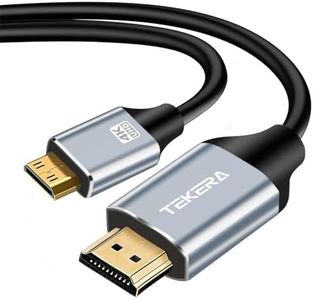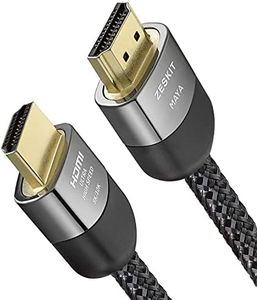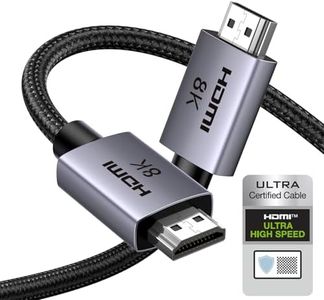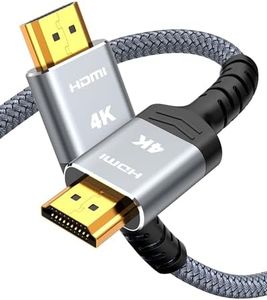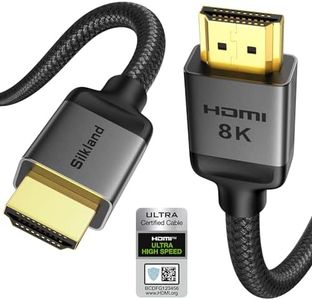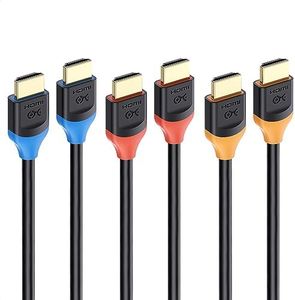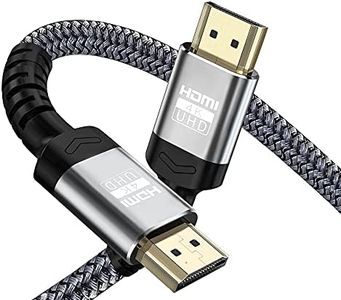We Use CookiesWe use cookies to enhance the security, performance,
functionality and for analytical and promotional activities. By continuing to browse this site you
are agreeing to our privacy policy
10 Best Hdmi Cables
From leading brands and best sellers available on the web.By clicking on a link to a third party's website, log data is shared with that third party.
Buying Guide for the Best Hdmi Cables
Choosing an HDMI cable might sound simple, but a bit of understanding can help you get the most out of your setup. HDMI cables are used to transmit audio and video signals from sources like Blu-ray players, game consoles, or computers to your TV or monitor. While many cables look similar, their capabilities can vary depending on their specifications. Focusing on a few key specs will ensure you buy the right cable for your needs and avoid unnecessary headaches like signal loss or compatibility problems.Cable Version (Standard, High-Speed, Premium High-Speed, Ultra High Speed)The cable version indicates the speed and maximum resolution the cable can reliably transmit. Standard HDMI cables are suited for older TVs and basic HD content, supporting up to 1080i. High-Speed cables are more common now and are ideal for most HD and 4K TVs, supporting up to 4K resolution at 30Hz. Premium High-Speed can handle 4K at higher frame rates and features like HDR. Ultra High Speed cables are necessary for the latest TVs and devices that support 8K resolution, higher refresh rates, and advanced gaming features. To pick the right one, check what your device outputs and your display’s capabilities. For modern 4K or 8K TVs, stick to High-Speed or better; for older devices, a Standard cable may suffice.
Cable LengthThis spec refers to how long the HDMI cable is, usually measured in meters or feet. The longer the cable, the more potential there is for signal loss, especially with cheaper cables or older technology. Cables under 3 meters (about 10 feet) generally perform reliably in most situations. For longer distances, consider cables specifically rated for the length, or those with built-in signal boosters. Choose a cable length that provides some flexibility but isn’t overly long — only as long as you need to avoid signal problems and cable clutter.
Connector Type (Standard, Mini, Micro)HDMI connectors come in three main sizes: Standard (Type A), Mini (Type C), and Micro (Type D). Most TVs and home theater equipment use the Standard size, while smaller devices like cameras or tablets may use Mini or Micro. Make sure you know which connector your device and display require. If your devices use different connector sizes, you’ll need a cable with the appropriate combination, or use an adapter.
Supported Features (Ethernet, ARC/eARC, 3D, HDR)Some HDMI cables are marketed with support for extra features like Ethernet (for networking between HDTV devices), ARC/eARC (Audio Return Channel/Enhanced Audio Return Channel for sending audio back from your TV to your audio system), 3D video, or HDR (High Dynamic Range for better colors and contrast). Not every cable supports all these features, and not every user needs them. If you run audio through your TV to a soundbar or receiver, ARC/eARC support might be important. If you don’t use these advanced features, you can focus on more basic cables.
Build Quality and ShieldingThis refers to how well the cable is constructed, including the quality of the materials (like the insulation and plating on connectors) and protection against external interference. Well-built cables are less likely to break or fail over time and may provide more stable signals, particularly in environments with lots of electronic interference. For most home uses, standard build quality suffices, but for critical setups or environments with lots of electronic devices, you might want extra shielding. Picking a cable with strong connectors and thick insulation is usually a smart move if you plan to plug and unplug often.
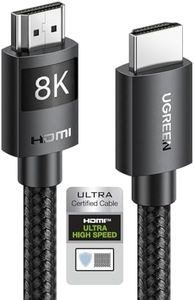

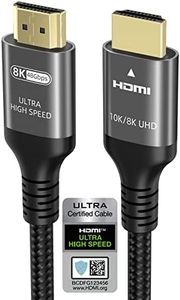
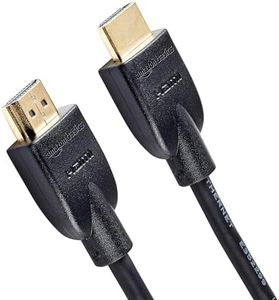

![[Ultra High Speed HDMI Certified] Cable Matters 2-Pack 48Gbps 8K HDMI Cable - 2m, 8K@60Hz, 4K@240Hz and HDR Support for PS5, Xbox Series X/S, RTX3080/3090, RX 6800/6900, Apple TV, and More](https://images-proxy.bestreviews.guide/ZzeNZHwJfY2ze-mZsJg4m7FOOL8=/0x300/https://m.media-amazon.com/images/I/41i9czgPgeL._AC_CX679_.jpg)
